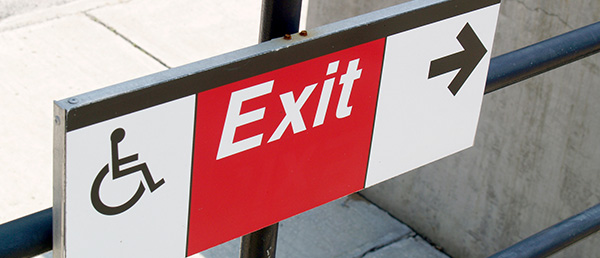Despite laws against discrimination and updated building codes, many workplaces still don’t consider the needs of people with disabilities or mobility issues when planning for emergencies. A 2017 review in Australia found that one-third to half of people with disabilities at work don’t have the safety support they need. Most of the changes made are about making places accessible, not safer.
Understanding Individual Needs
In workplaces, there should be a plan for every employee with mobility problems, whether their issue is temporary or permanent. Creating an evacuation plan isn’t complicated. The key is to involve everyone. Getting the plan right is important, not just for safety but also for preserving an employee’s dignity. Sometimes, not having a personal evacuation plan can lead to discrimination, even during practice drills. It can also make emergencies more dangerous for these employees and harm their self-esteem.
What Does ‘Mobility Impaired’ Mean?
The basic definition of ‘mobility impaired’ includes anyone who needs help during an evacuation, like someone who can’t walk well, hold objects, or lift them. Some employees with mobility issues use things like wheelchairs or crutches, and they’ll need help during emergencies. Mobility problems can also be temporary, like during pregnancy, or if someone has a short-term injury or illness that makes it hard to evacuate without assistance.
Every Personal Emergency Evacuation Plan (PEEP) must match the person’s needs. But don’t assume you know what they need based on their condition. They know best what their bodies can and can’t do in an emergency. The best way to make sure their needs are met is to talk to them and create the PEEP together. Also, think about the building, the kind of emergency, and if there are trained people who can help during an evacuation. You should do this with the person, their boss (if they have one), and the Chief Warden for the building.
Finding a Safe Place
Your PEEP should also tell where a safe place is in the building. This is a spot in the building where people can stay during a fire or other emergencies when leaving isn’t safe or possible.
Tall buildings can be tough for employees with mobility issues. They often use stairwells as safe spots, but these places need to be big enough for someone in a wheelchair to turn around and have space for at least one more person to wait until rescue teams come, without blocking the way for others trying to get out.
At the very least, a PEEP should say where to go and how to wait safely for help. It’s very important that everyone who needs to know about a PEEP is aware of it. This way, they can help in an emergency.
Practice Evacuations
A good PEEP that’s shared with emergency responders helps make sure people with mobility issues get the right help when they need it.
While your co-workers might want to help someone with mobility issues in an emergency, that’s not what the PEEP is for. In some cases, someone with mobility issues might be able to get out with a little help. In others, they might need more help. A PEEP is meant to cover this and make sure there’s a plan before an emergency, not after it’s too late. It’s also risky to assume that your co-workers will know how to help someone with mobility issues during an emergency. Doing regular drills and practicing evacuating people with different mobility problems is crucial and can save lives during a real emergency.
In Conclusion
Even though people are more aware of what those with disabilities need, many workplaces still don’t include them in their emergency plans. It’s really important for emergency plans to think about what each employee needs, including those with disabilities or mobility problems.
Contact WA Fire for inclusive evacuation plans
If you need help making your emergency plan and PEEPs, please get in touch with us today. Including everyone in your emergency plans is a big step towards keeping all your employees safe, no matter their mobility challenges.

